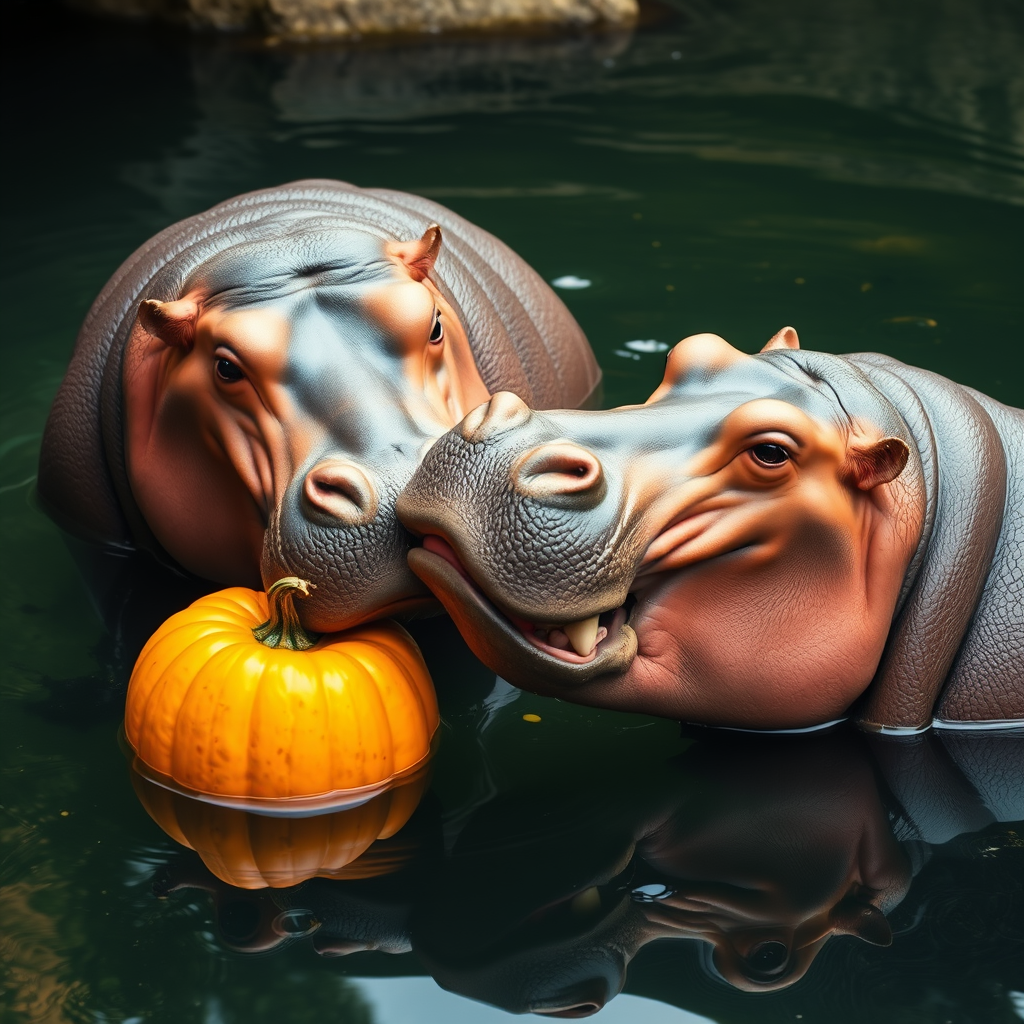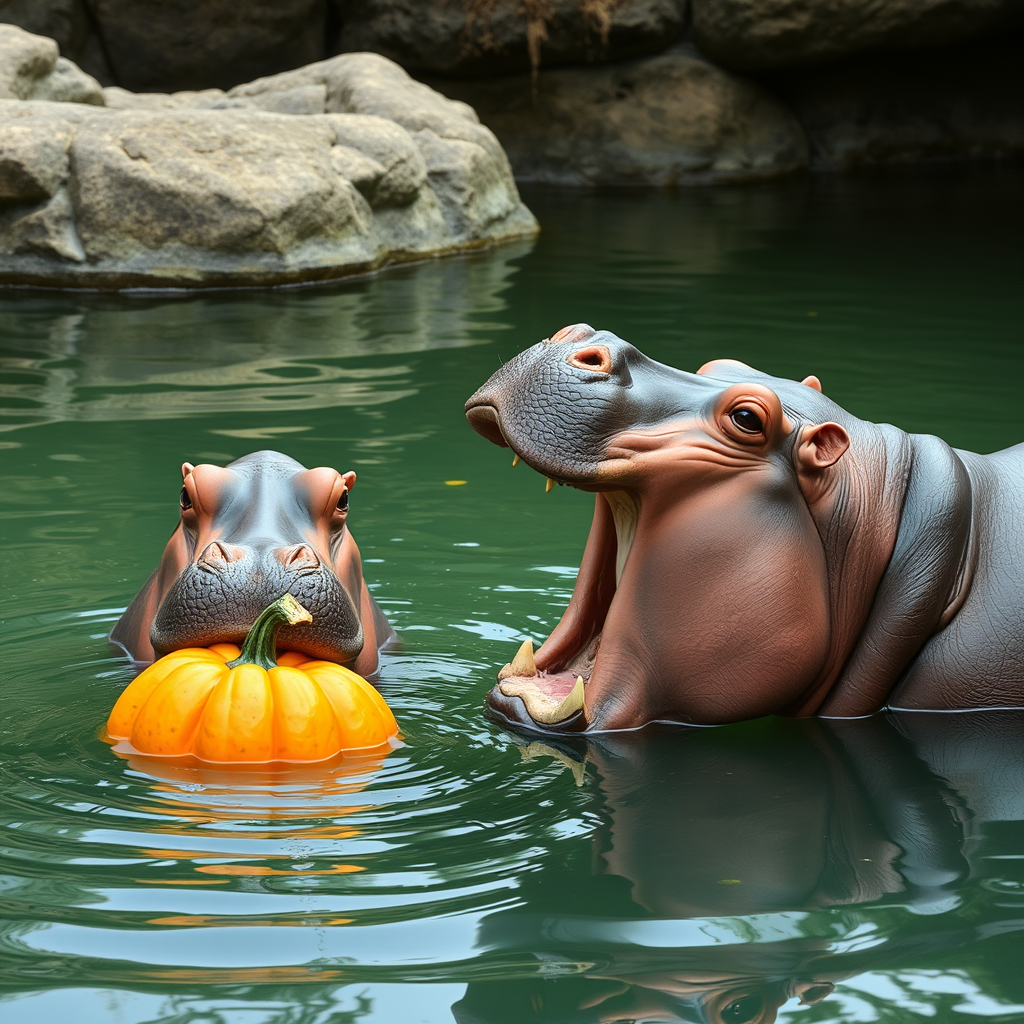Hippo Habits: What These Massive Mammals Really Eat
The Pumpkin-Loving Giants of the Water
When fall rolls around at zoos and wildlife sanctuaries, it’s not just people who get excited about pumpkins—hippos do too. Seeing a 3,000-pound animal chomp through a whole pumpkin like it’s a grape is one of the most oddly satisfying sights in the animal world. But beyond the fun visuals and satisfying crunch, there’s more to the hippo-pumpkin connection than just a seasonal snack.
Do Hippos Really Eat Pumpkins?
Yes! Hippos absolutely love pumpkins, especially when they’re served whole and raw. In captivity, keepers often give pumpkins to hippos as a form of enrichment—something fun, different, and nutritious to munch on. Watching a hippo crush a pumpkin with its powerful jaws is both entertaining and a good workout for their teeth and jaw muscles. Plus, pumpkins are full of fiber and water, which complements their regular diet perfectly.
What Do Hippos Eat in the Wild?
Despite their enormous size and fierce look, hippos are mostly herbivores. Their natural diet consists mainly of short grass. At night, they leave the water to graze, often walking for miles to find enough to eat. Unlike cows or deer, hippos don’t chew cud. Instead, they have incredibly strong stomachs that can break down the tough plant matter they consume. They might look like they’re lazing in the water all day, but when night falls, it’s all business—grazing business.
Feeding Habits in Captivity
In zoos and sanctuaries, hippos get a more varied diet than their wild counterparts. Along with hay and specialized pellets, they’re offered fruits and vegetables like melons, carrots, apples, and yes—pumpkins. These snacks are not only nutritious, but they also keep the animals mentally engaged and physically active. Keepers often hide food in the water or inside objects to mimic the challenge of foraging in the wild.
Why Hippos Are Built Like That
Everything about a hippo’s body is designed to support its semi-aquatic lifestyle. Their massive size helps them sink into shallow rivers and lakes, where they spend most of their day submerged to stay cool. They don’t swim in the traditional sense—they actually bounce off the bottom and glide through water using their weight. Despite their bulk, hippos can run up to 19 mph on land in short bursts. That’s faster than most humans.
Are Hippos Dangerous?
Very. Hippos may seem peaceful floating in water with just their eyes and ears sticking out, but they are considered one of the most dangerous animals in Africa. They are extremely territorial and will defend their space aggressively—especially when calves are around. Their jaws can open to a 150-degree angle and deliver a bite force strong enough to crush bone or split a canoe in half. That said, they don’t eat meat—they just don’t play about their space.
The Soft Side of Hippos
Despite their tough reputation, hippos have a surprisingly gentle side—especially when it comes to their young. Mothers are incredibly protective and will keep their babies close in the water. Baby hippos are born underwater and instinctively paddle to the surface for air. They nurse both on land and in water, sometimes resting on their mother’s back for safety. Socially, hippos live in groups called pods, which can include up to 30 individuals. These pods are often led by a dominant male, but females and calves make up the core of the group.
Final Thought: Pumpkins, Power, and Peaceful Moments
Watching a hippo crunch into a pumpkin might be adorable, but it’s also a reminder of just how fascinating and complex these animals really are. From their quiet, water-bound days to their powerful nighttime grazing routines, hippos are full of surprises. Their diet may be plant-based, but their personalities are anything but soft. They’re strong, smart, social, and surprisingly seasonal when autumn snacks roll in.
If you’re curious about the wonders of wildlife, stick around—there’s a whole world to explore at Wonder of Wild.








